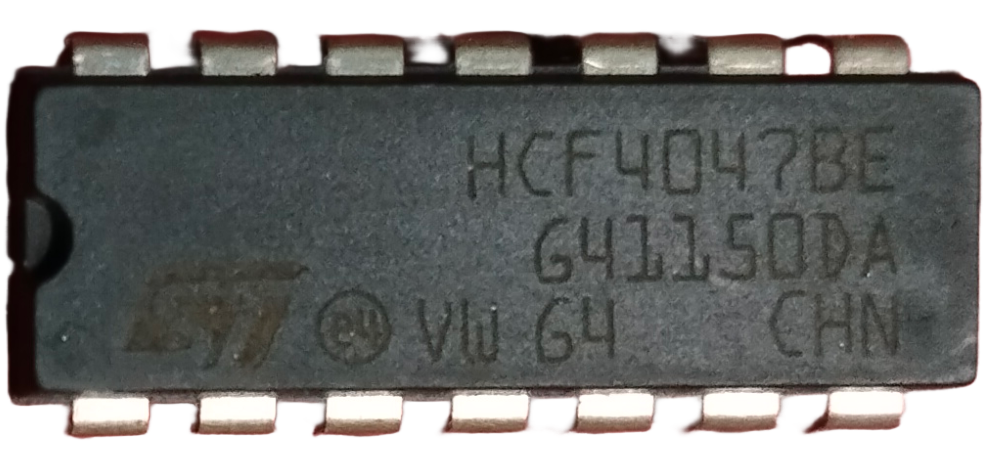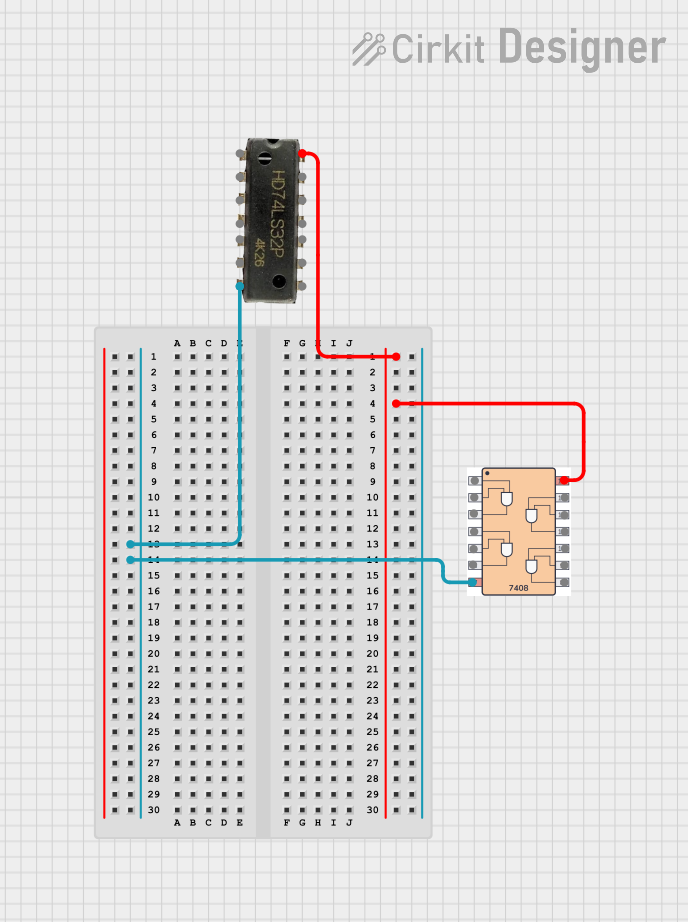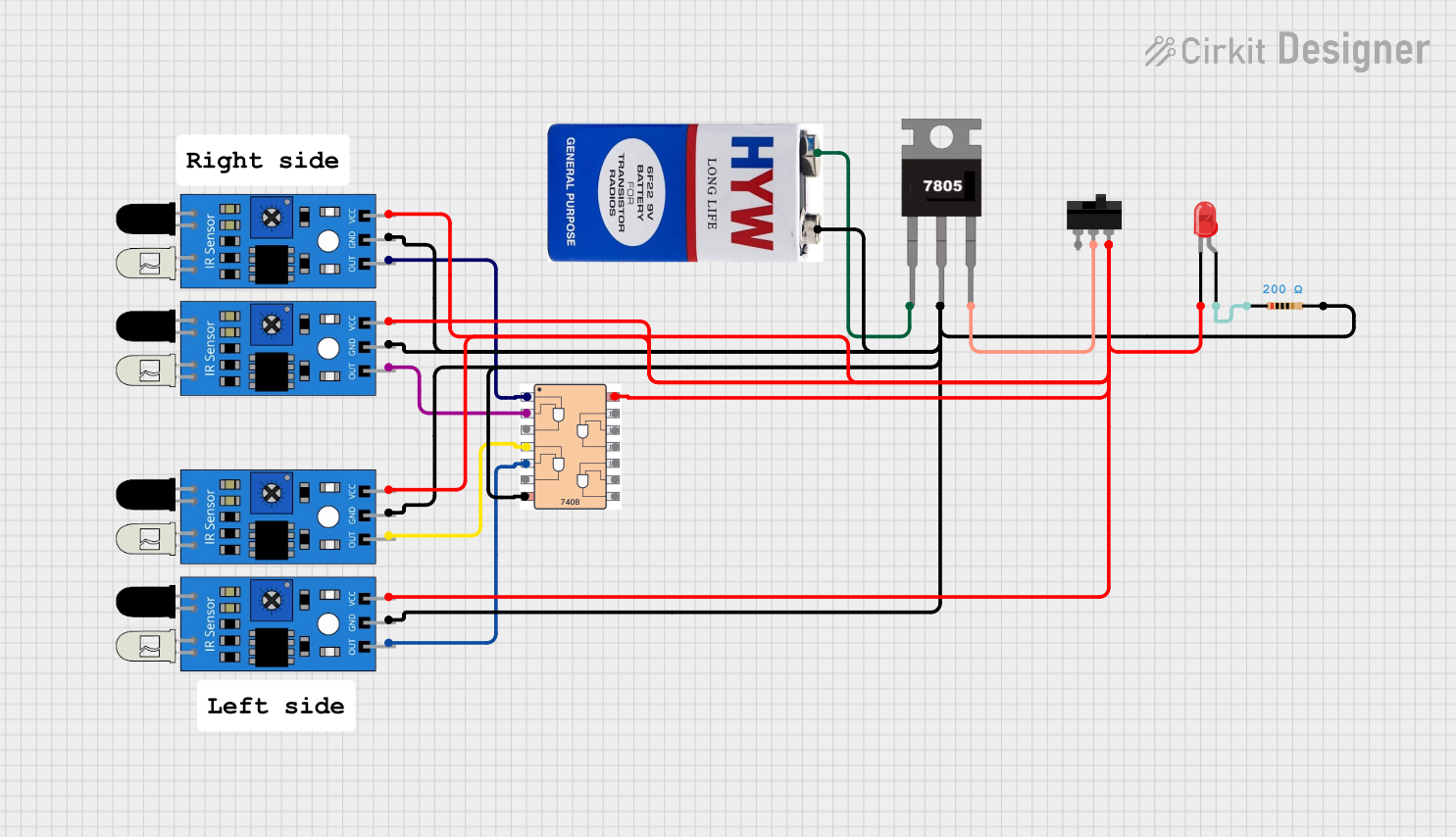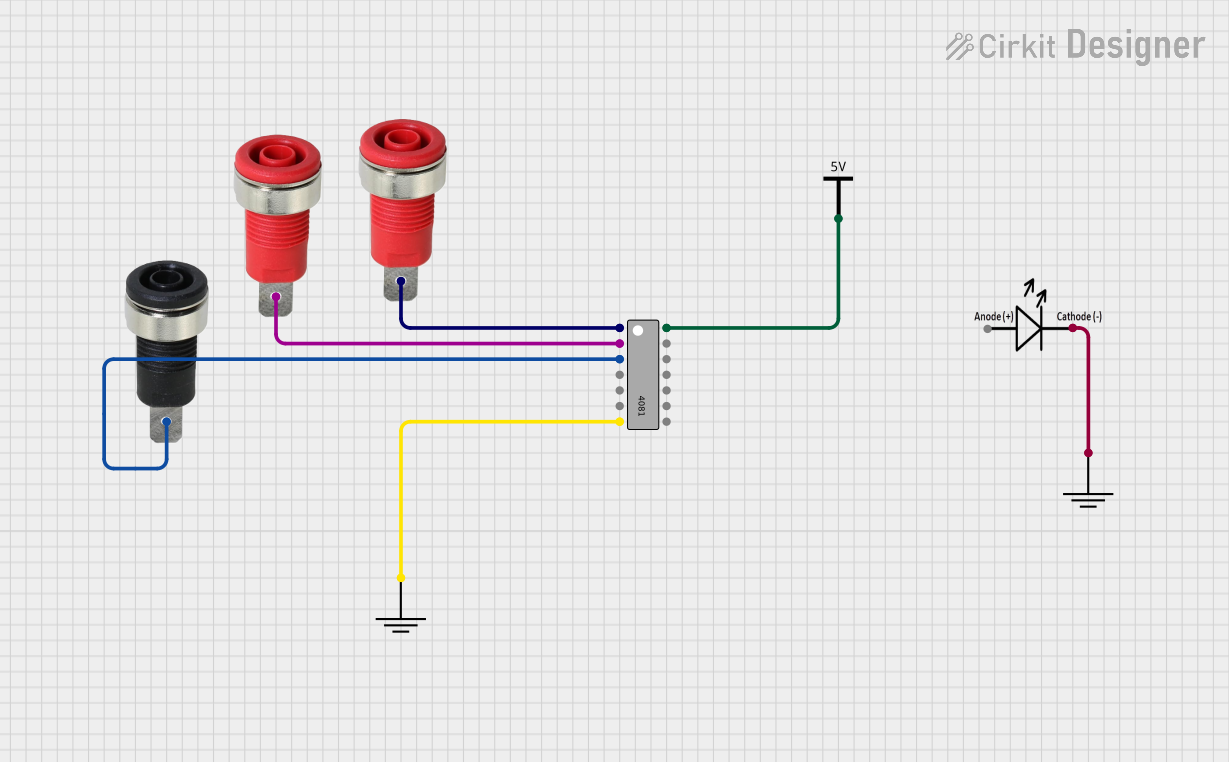
How to Use 4047 ic : Examples, Pinouts, and Specs

 Design with 4047 ic in Cirkit Designer
Design with 4047 ic in Cirkit DesignerIntroduction
The 4047 IC is a versatile integrated circuit designed to operate as an astable multivibrator, monostable multivibrator, or Schmitt trigger. It is widely used in applications requiring precise timing, frequency generation, and pulse-width modulation. Its ability to operate in both monostable and astable modes makes it a popular choice for circuits such as oscillators, timers, and signal generators.
Explore Projects Built with 4047 ic

 Open Project in Cirkit Designer
Open Project in Cirkit Designer
 Open Project in Cirkit Designer
Open Project in Cirkit Designer
 Open Project in Cirkit Designer
Open Project in Cirkit Designer
 Open Project in Cirkit Designer
Open Project in Cirkit DesignerExplore Projects Built with 4047 ic

 Open Project in Cirkit Designer
Open Project in Cirkit Designer
 Open Project in Cirkit Designer
Open Project in Cirkit Designer
 Open Project in Cirkit Designer
Open Project in Cirkit Designer
 Open Project in Cirkit Designer
Open Project in Cirkit DesignerCommon Applications
- Frequency generation for oscillators
- Pulse-width modulation (PWM) circuits
- Timer circuits (monostable mode)
- LED and lamp flashers
- Clock pulse generation
- Square wave generation
Technical Specifications
The 4047 IC is a CMOS-based device with low power consumption and high noise immunity. Below are its key technical details:
Key Specifications
- Supply Voltage (Vcc): 3V to 15V
- Operating Current: 10 µA (typical at 5V)
- Output Current: 3.2 mA (maximum at 5V)
- Frequency Range (Astable Mode): Up to 1 MHz
- Temperature Range: -40°C to +85°C
- Logic Compatibility: CMOS and TTL
- Package Types: DIP-14, SOIC-14
Pin Configuration and Descriptions
The 4047 IC comes in a 14-pin package. Below is the pinout and description:
| Pin Number | Pin Name | Description |
|---|---|---|
| 1 | Astable Input | External resistor connection for astable mode frequency control. |
| 2 | Astable Input | External capacitor connection for astable mode frequency control. |
| 3 | Astable/Monostable Select (A/!M) | Selects between astable (logic HIGH) and monostable (logic LOW) modes. |
| 4 | Reset | Resets the IC when logic HIGH is applied. |
| 5 | Trigger | Trigger input for monostable mode. |
| 6 | Output Q | Primary output of the IC. |
| 7 | Output !Q | Complementary output of the IC. |
| 8 | Ground (GND) | Ground connection. |
| 9 | External Capacitor | External capacitor connection for timing in monostable mode. |
| 10 | External Resistor | External resistor connection for timing in monostable mode. |
| 11 | Not Connected (NC) | No internal connection. |
| 12 | Vcc | Positive power supply. |
| 13 | Oscillator Output | Oscillator signal output in astable mode. |
| 14 | Discharge | Discharge pin for the external capacitor. |
Usage Instructions
Using the 4047 IC in a Circuit
The 4047 IC can be configured in two primary modes: astable and monostable. Below are the steps to use the IC in each mode:
1. Astable Mode (Oscillator Mode)
- Connect a resistor between Pin 1 and Pin 2, and a capacitor between Pin 2 and GND.
- Set Pin 3 (A/!M) to logic HIGH to enable astable mode.
- The frequency of oscillation is determined by the resistor (R) and capacitor (C) values: [ f = \frac{1}{4.4 \times R \times C} ]
- The output square wave is available at Pin 6 (Q) and its complement at Pin 7 (!Q).
2. Monostable Mode (Timer Mode)
- Connect a resistor between Pin 10 and Vcc, and a capacitor between Pin 9 and GND.
- Set Pin 3 (A/!M) to logic LOW to enable monostable mode.
- Apply a trigger pulse to Pin 5 to start the timing cycle.
- The pulse width is determined by the resistor (R) and capacitor (C) values: [ T = 2.48 \times R \times C ]
- The output pulse is available at Pin 6 (Q).
Important Considerations
- Ensure the supply voltage (Vcc) is within the specified range (3V to 15V).
- Use decoupling capacitors (e.g., 0.1 µF) near the power supply pins to reduce noise.
- Avoid leaving unused input pins floating; connect them to GND or Vcc as needed.
- For precise timing, use high-quality resistors and capacitors with low tolerance.
Example: Connecting the 4047 IC to an Arduino UNO
The 4047 IC can be used with an Arduino UNO to generate a square wave. Below is an example of how to configure the IC in astable mode and read the output using Arduino:
Circuit Connections
- Connect Pin 12 (Vcc) to the 5V pin of the Arduino.
- Connect Pin 8 (GND) to the GND pin of the Arduino.
- Connect a 10 kΩ resistor between Pin 1 and Pin 2.
- Connect a 0.1 µF capacitor between Pin 2 and GND.
- Set Pin 3 (A/!M) to HIGH (connect to 5V).
- Connect Pin 6 (Q) to a digital input pin on the Arduino (e.g., Pin 2).
Arduino Code
// Define the input pin for the 4047 IC output
const int inputPin = 2;
void setup() {
pinMode(inputPin, INPUT); // Set the input pin as an input
Serial.begin(9600); // Initialize serial communication
}
void loop() {
int state = digitalRead(inputPin); // Read the state of the 4047 output
Serial.print("4047 Output State: ");
Serial.println(state); // Print the state to the Serial Monitor
delay(500); // Wait for 500 ms before reading again
}
Troubleshooting and FAQs
Common Issues and Solutions
No Output Signal in Astable Mode
- Cause: Incorrect resistor or capacitor values.
- Solution: Verify the R and C values and ensure they are within the recommended range.
No Response in Monostable Mode
- Cause: Trigger pulse not applied or incorrect timing components.
- Solution: Ensure a proper trigger pulse is applied to Pin 5 and check the R and C values.
Output Signal is Unstable
- Cause: Noise or insufficient decoupling.
- Solution: Add a 0.1 µF decoupling capacitor near the Vcc and GND pins.
High Power Consumption
- Cause: Supply voltage too high or incorrect connections.
- Solution: Ensure the supply voltage is within the specified range (3V to 15V).
FAQs
Q1: Can the 4047 IC generate a sine wave?
A1: No, the 4047 IC generates square waves. For sine wave generation, additional circuitry is required.
Q2: What is the maximum frequency the 4047 IC can generate?
A2: The 4047 IC can generate frequencies up to 1 MHz in astable mode, depending on the R and C values.
Q3: Can I use the 4047 IC with a 3.3V power supply?
A3: Yes, the IC operates with supply voltages as low as 3V, making it compatible with 3.3V systems.
Q4: What happens if I leave the A/!M pin floating?
A4: Leaving the A/!M pin floating can cause unpredictable behavior. Always connect it to either Vcc (astable mode) or GND (monostable mode).